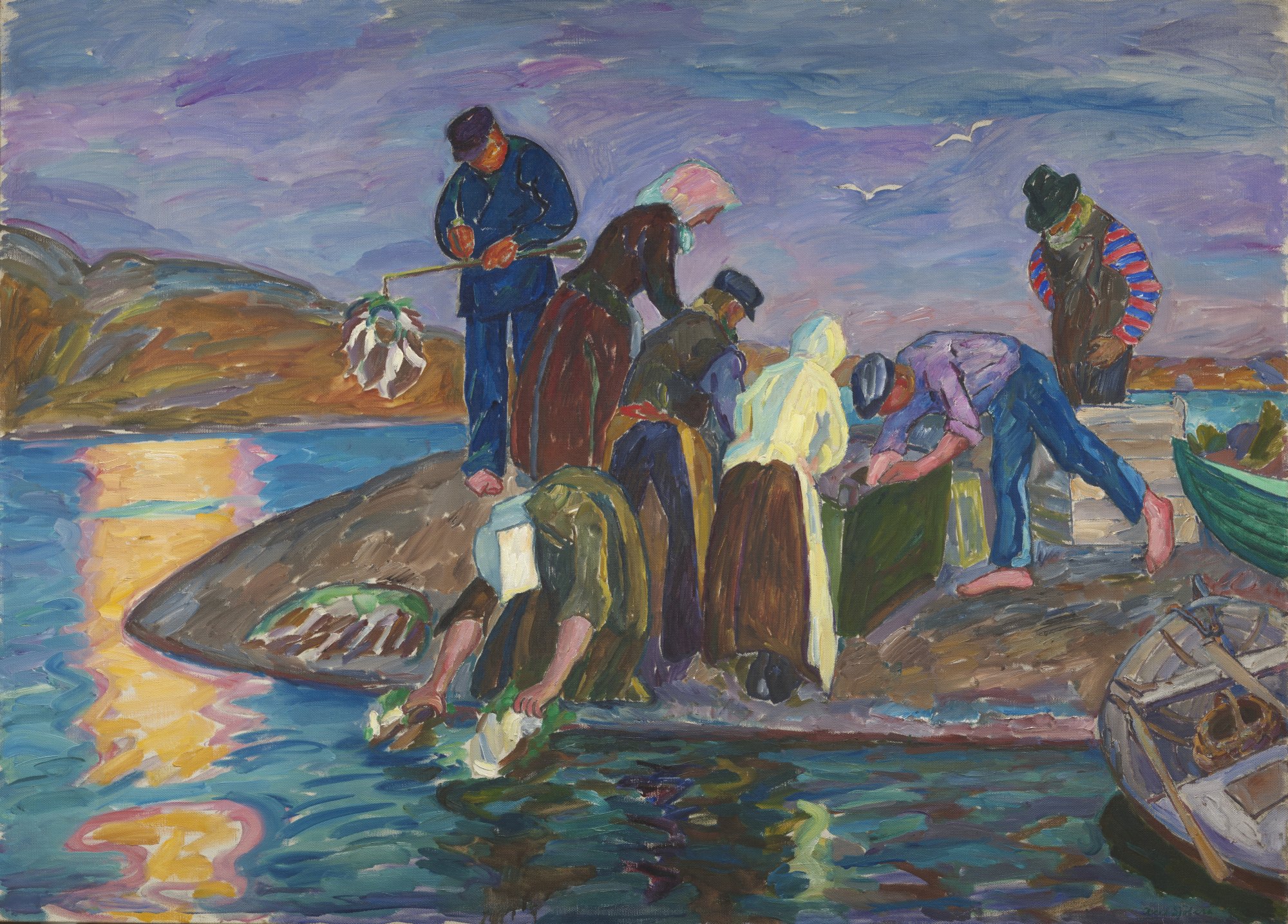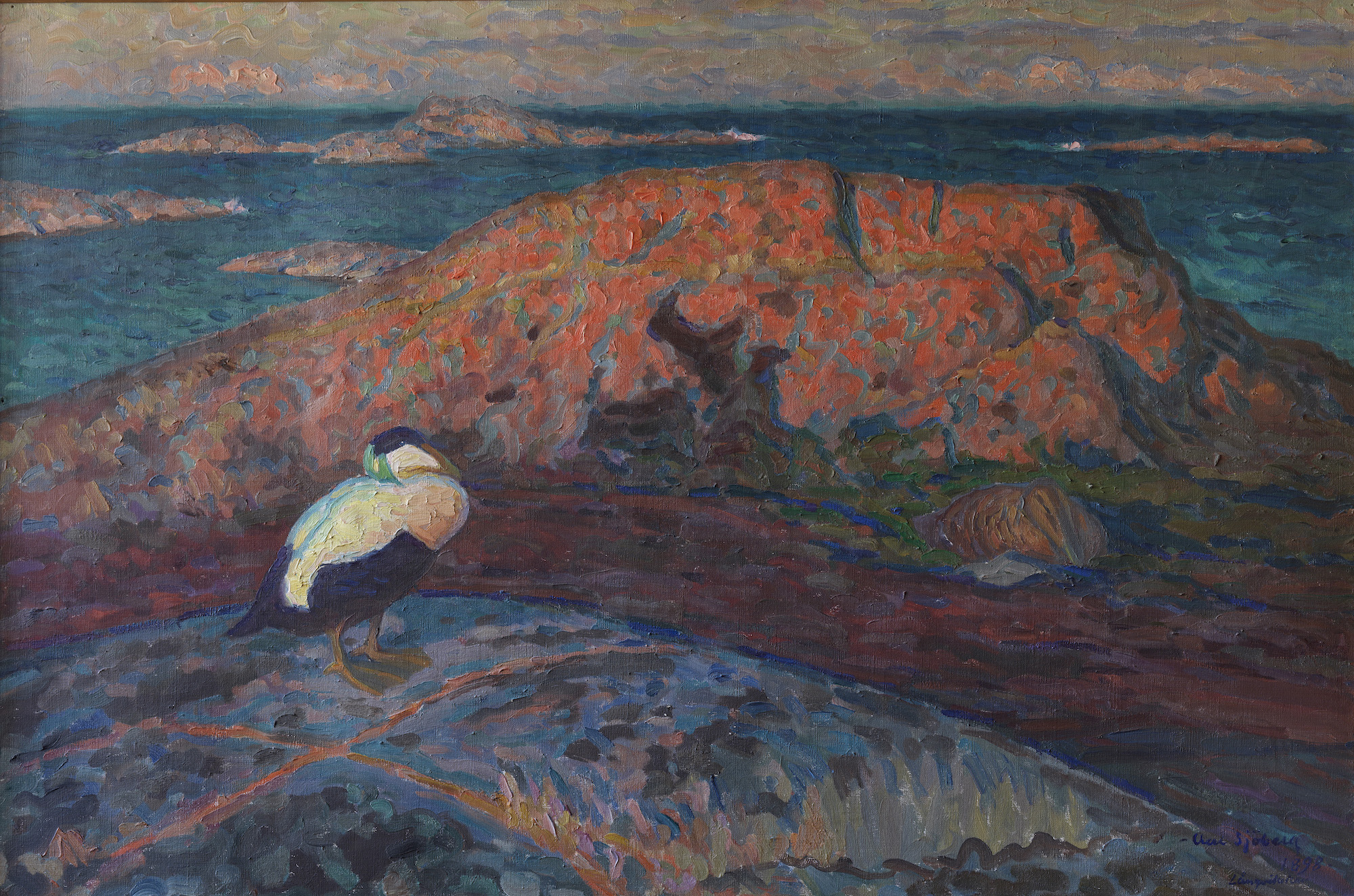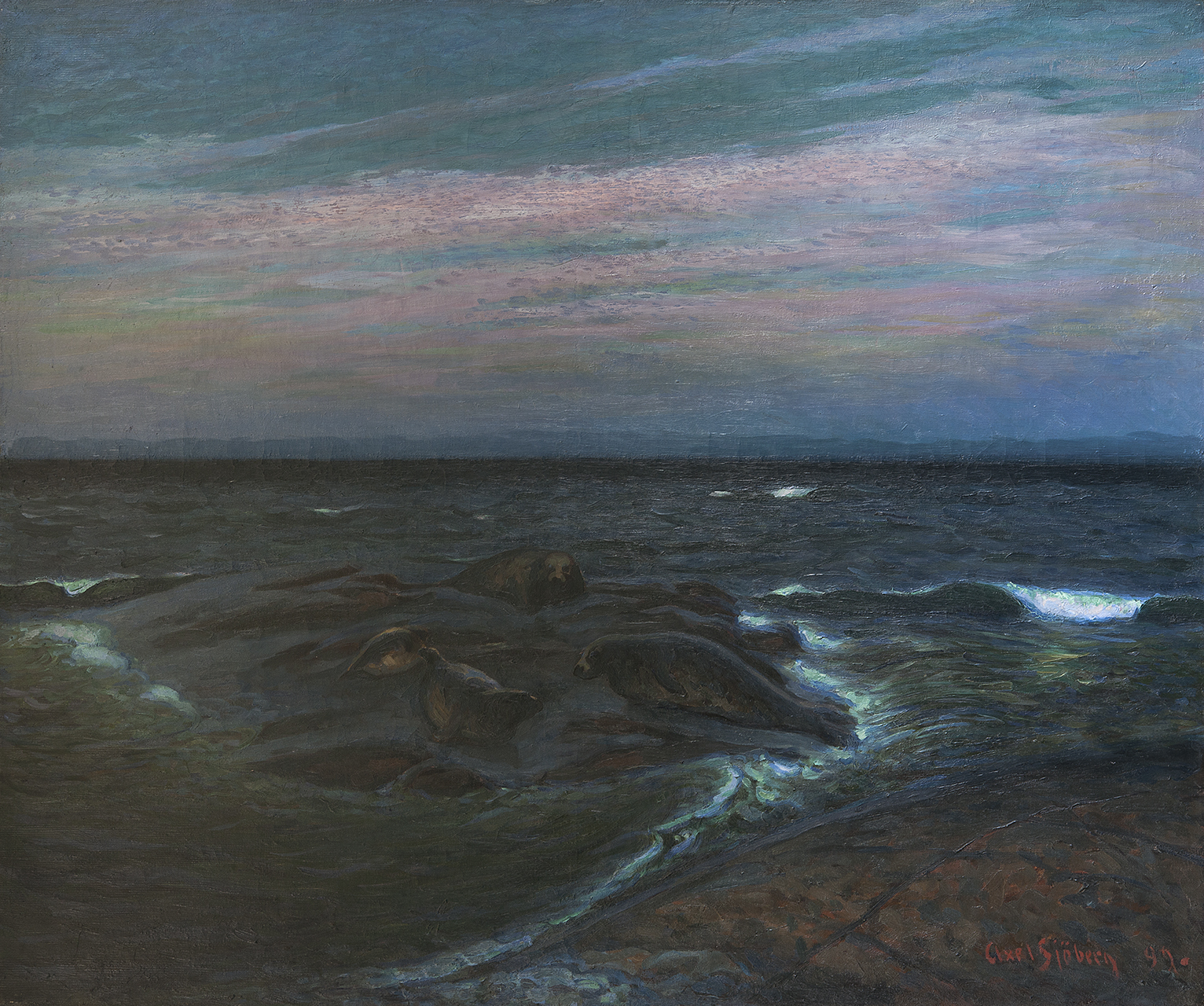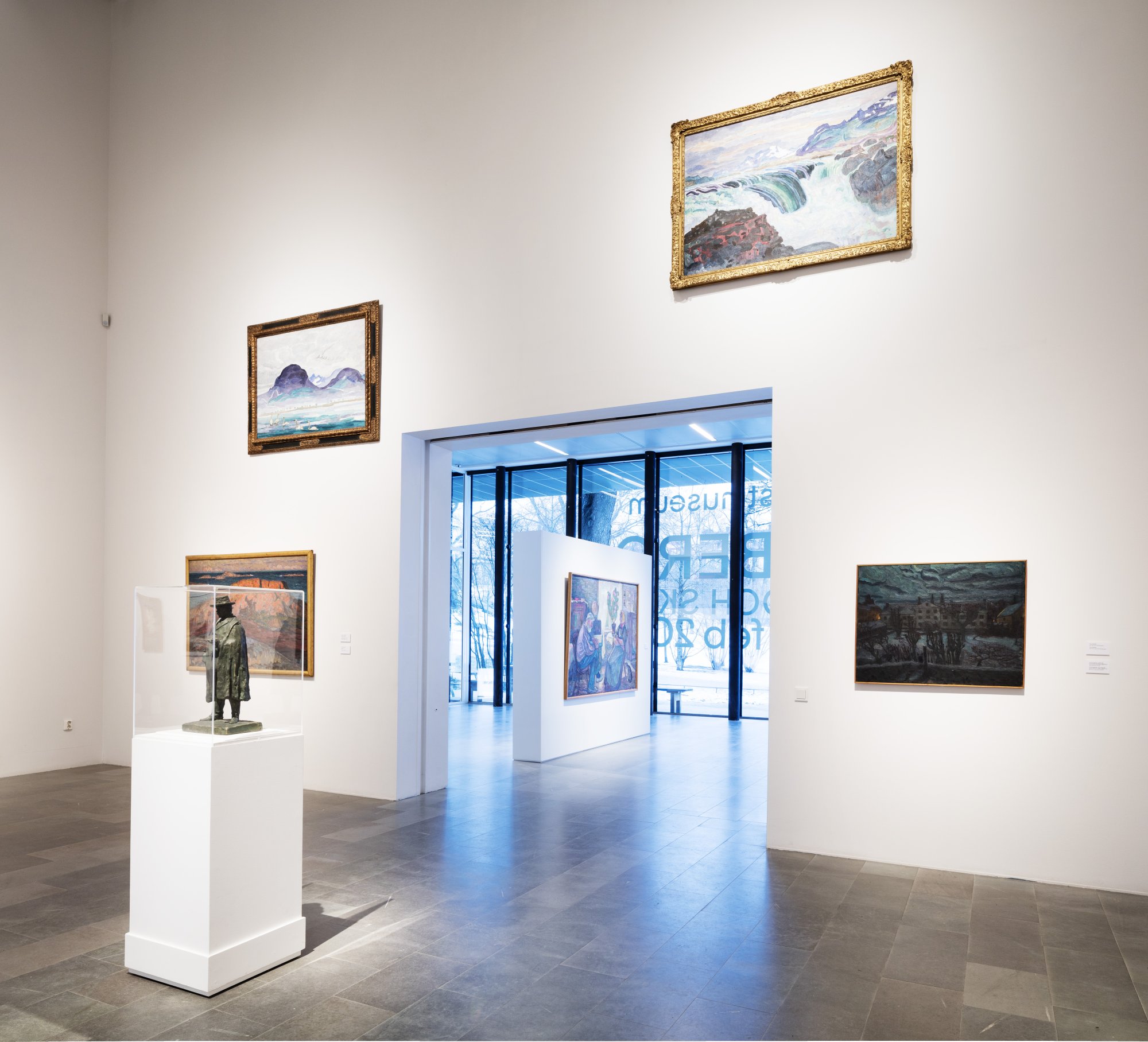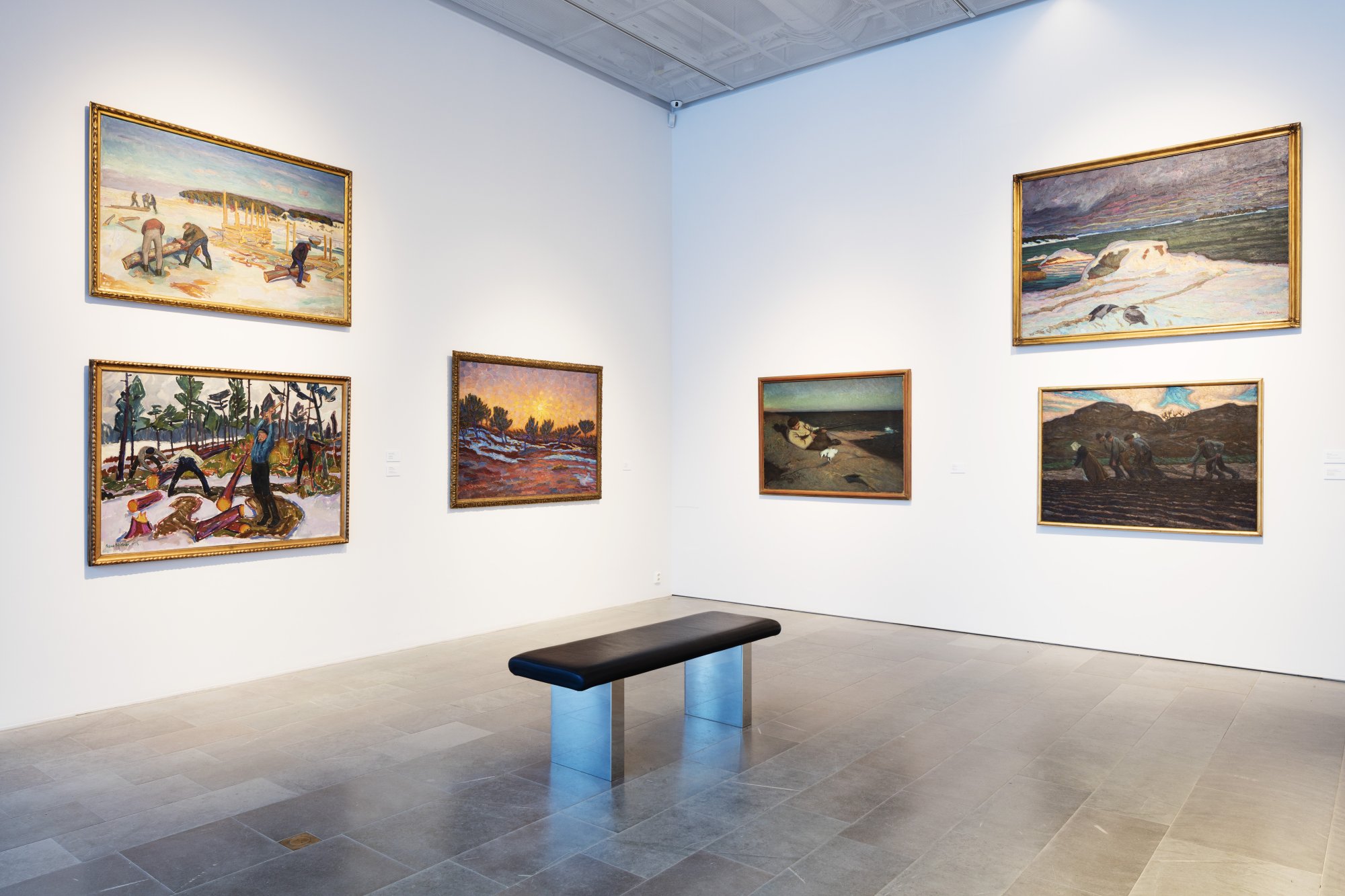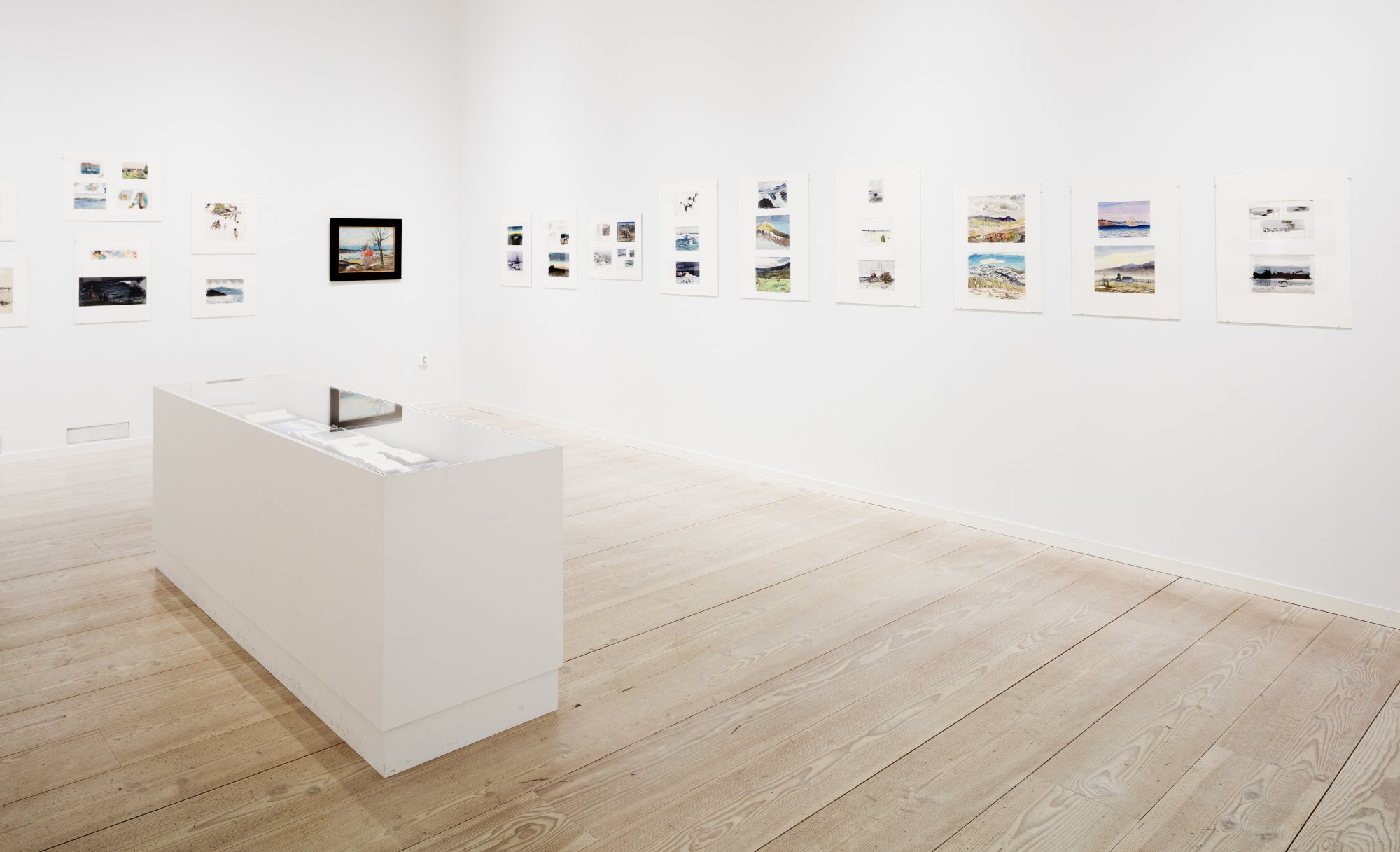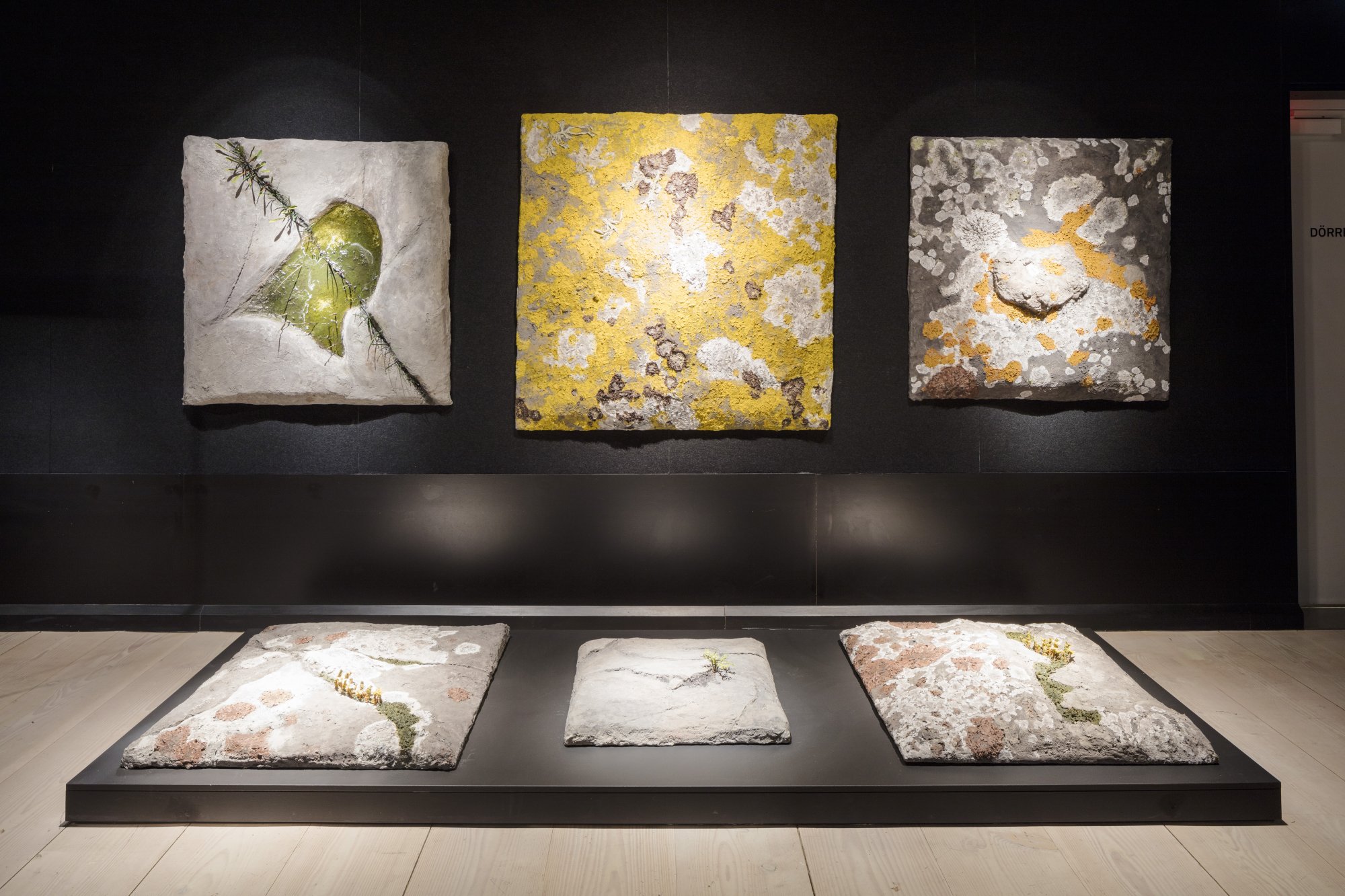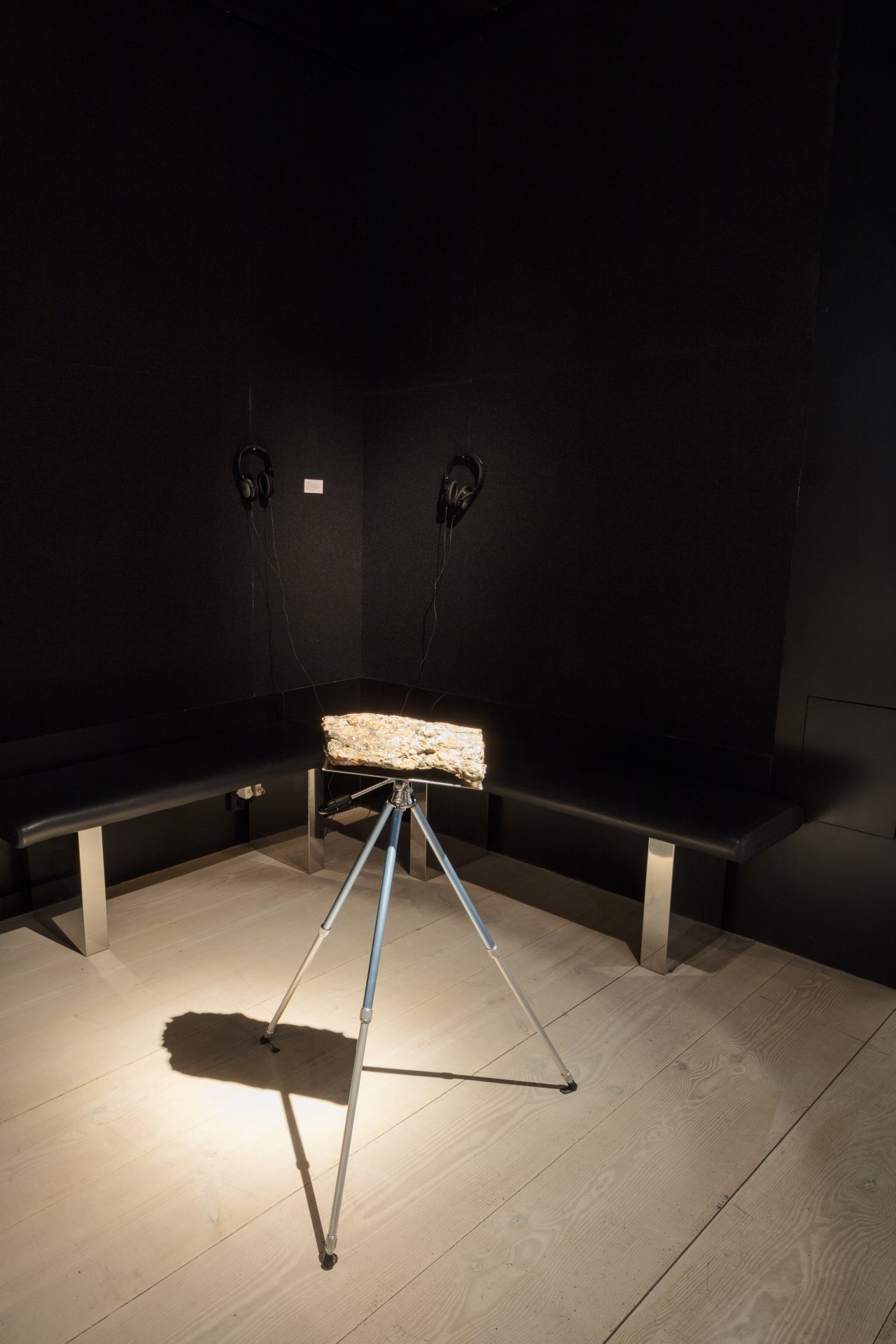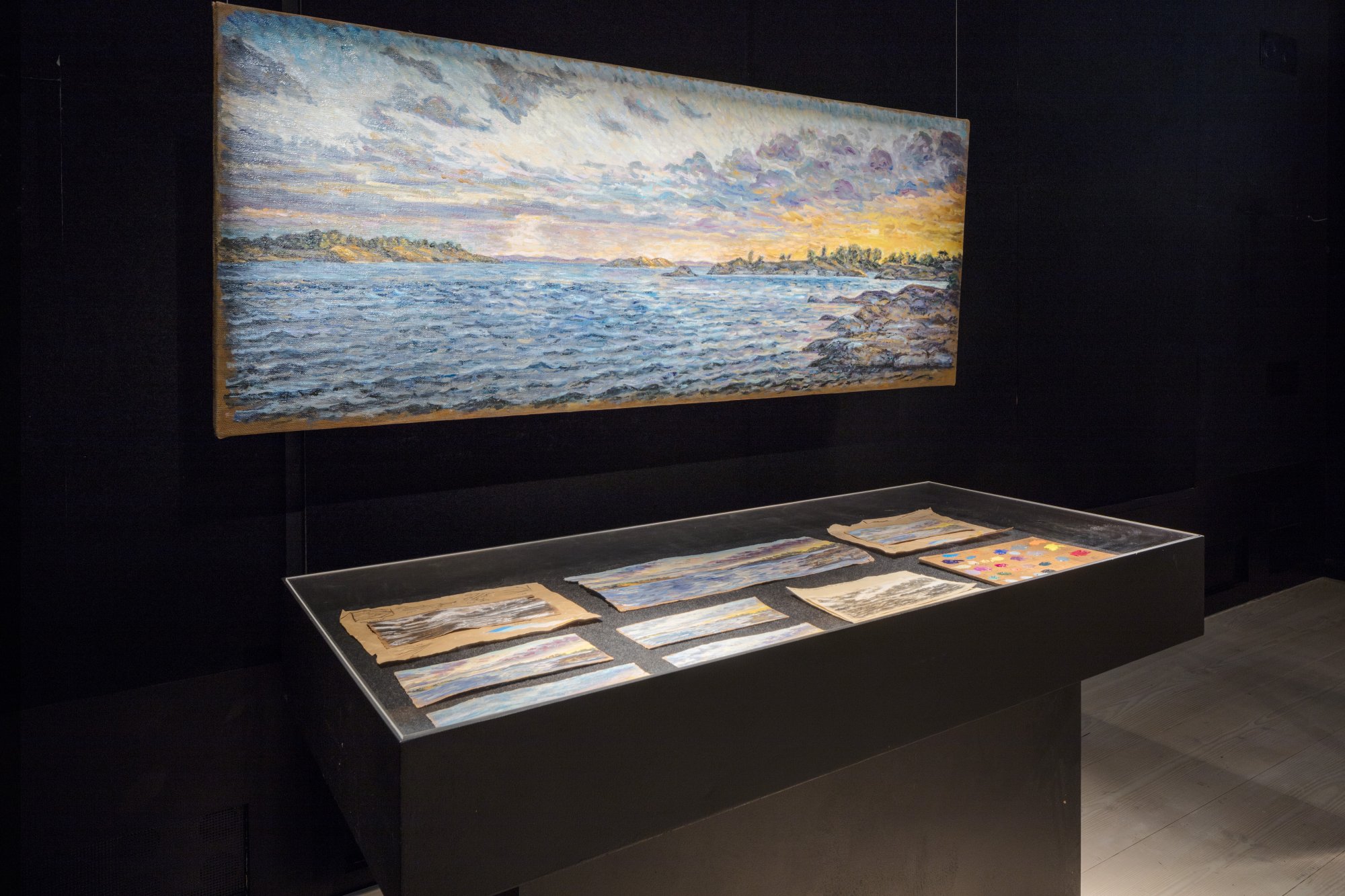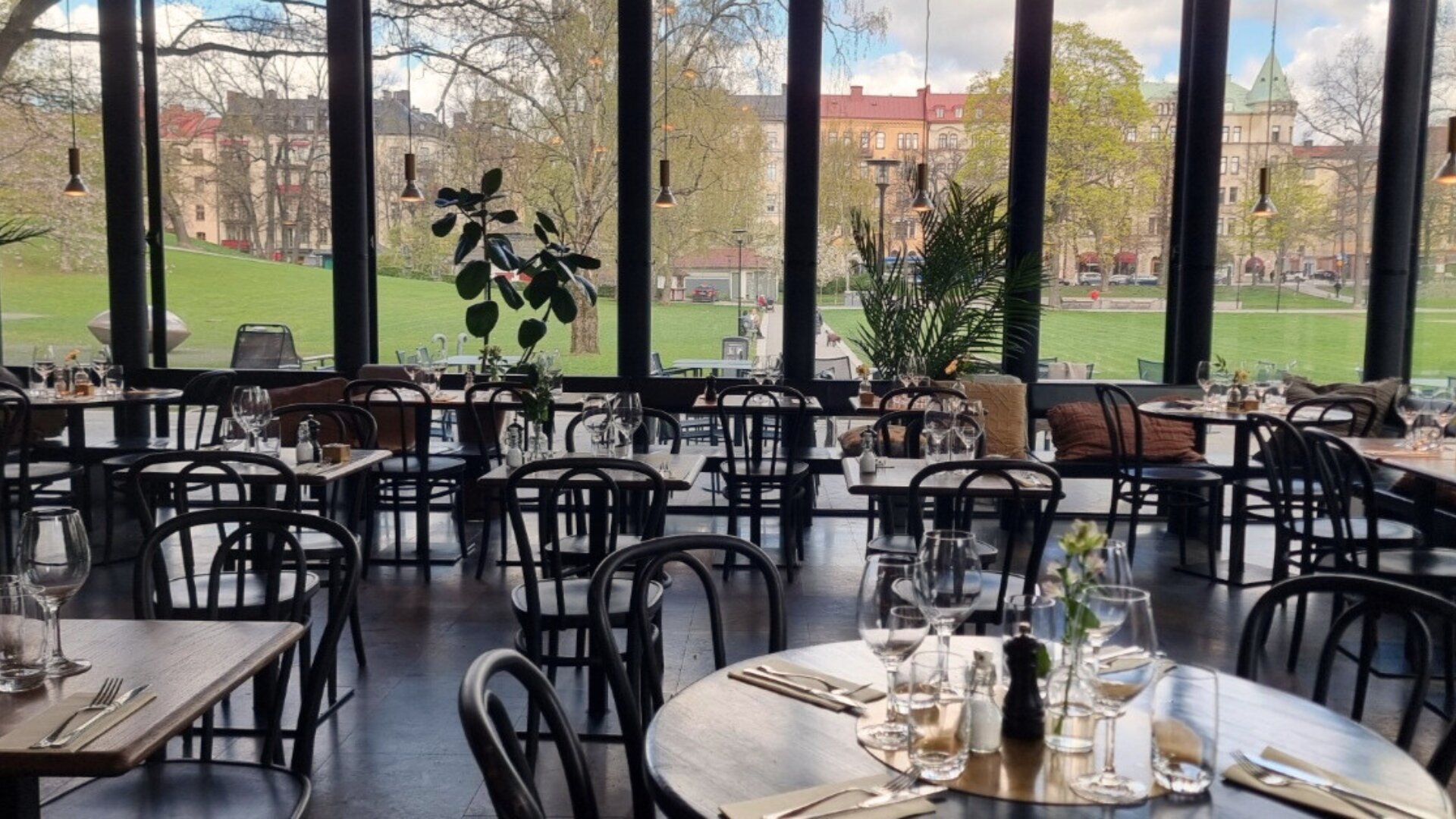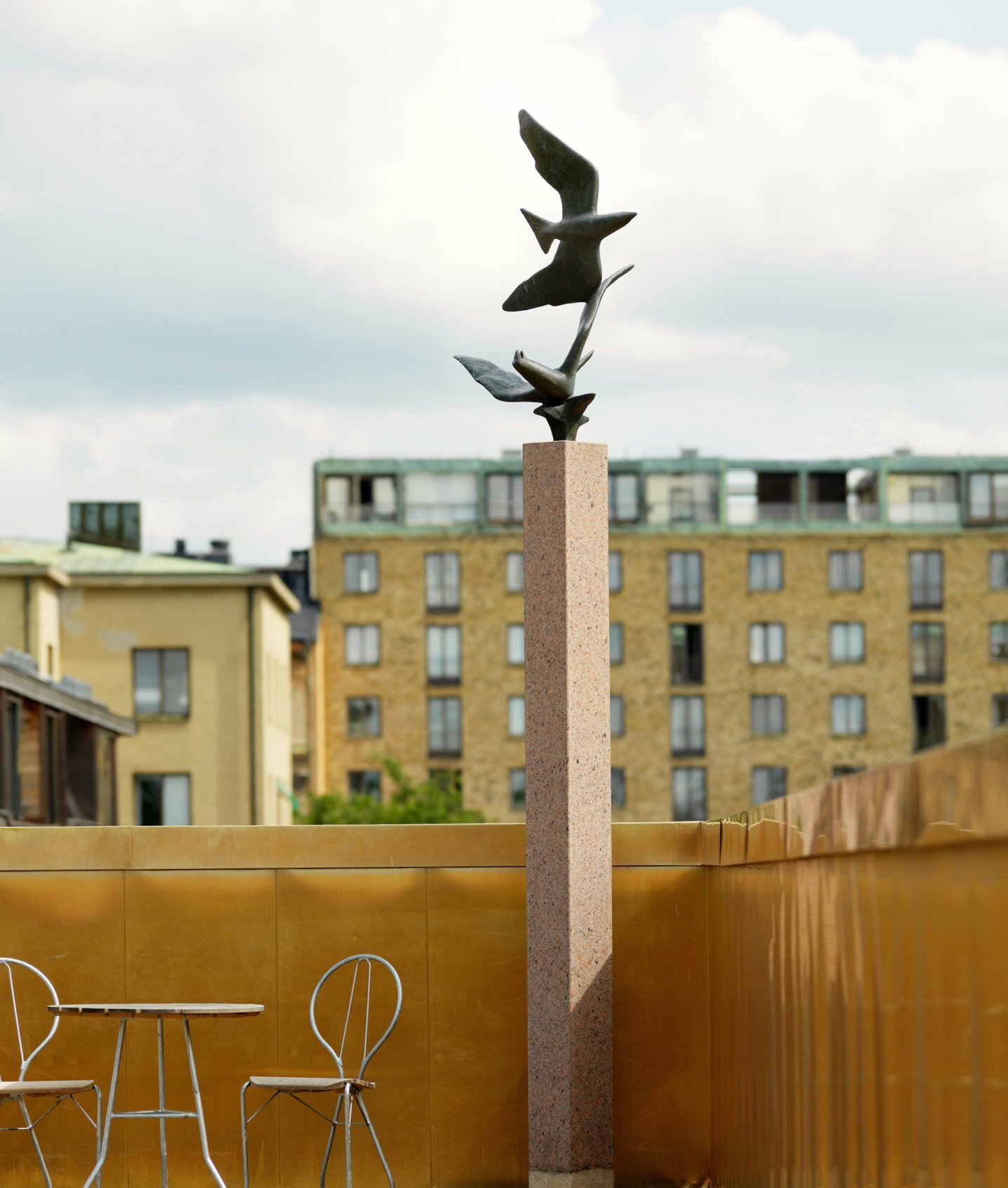Axel Sjöberg
10 December 2016—12 February 2017
Previous exhibition
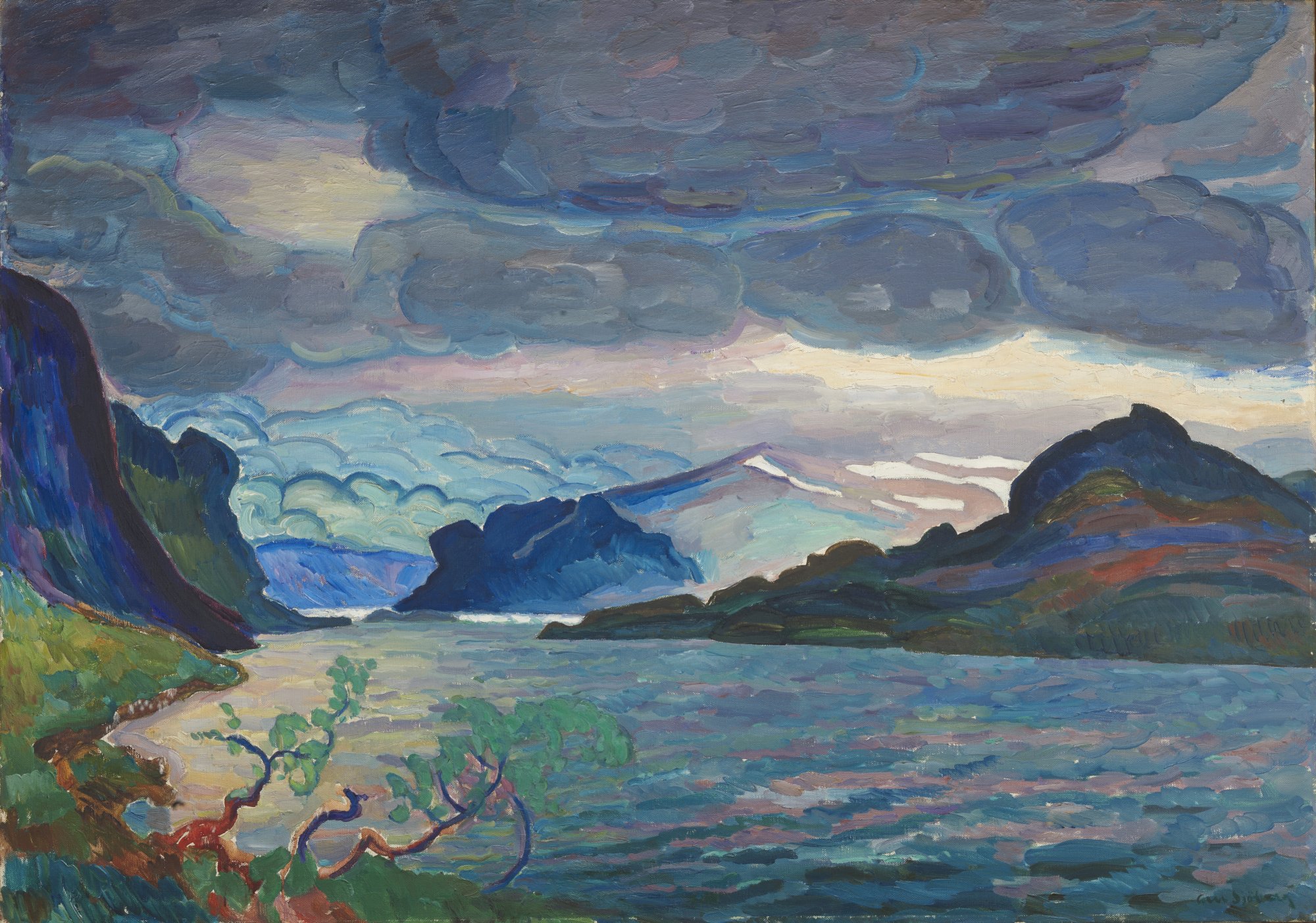
Axel Sjöberg began his life on Skeppsholmen, where the Stockholm archipelago begins. He eventually settled in the place where his mother came from, Vira bruk in Roslagen, not only because of his fondness for the skerries but also for the people and the lifestyle he found there.
With no father, and no other means of support, he found a job at the General Staff’s printing institution, where he learned how to make lithographs. He made illustrations for magazines and books so he could afford to study at the Royal Academy of Fine Arts.
But he didn’t become a graphic artist. Printing was, to him, forever associated with having to earn a living. One exception was when he published his book Bland kobbar och skär [Among Islets and Skerries] with his own texts and illustrations in 1900.
When it was published, Axel Sjöberg had been living for some years on the islands of Sandhamn and Långviksskär, where he had acquired houses and a studio. Both nature and the daily lives of the people who fished, hunted and farmed in the archipelago were of equal importance to him. He became the foremost portrayer of scenes from the harsh life of the people in the outer archipelago.In August Strindberg’s stories set in the archipelago, Axel Sjöberg found a literary counterpart to his artistic documentation. To capture his visual impressions as fast as possible, he became an extremely skilled watercolourist.
Alongside his sympathy with the landscape and island life, he also cultivated a life-long fascination for mountains and alpine wildlife, allowing the majestic scenery to speak for itself, without a trace of human activity.
The Axel Sjöberg Scholarship
Since 1986, Axel Sjöberg’s house on Långviksskär has been converted into housing for the Archipelago Foundation’s Axel Sjöberg scholarship holders. The scholarship is awarded every year to artists, writers or photographers who work in Sjöberg’s spirit. In connection with the ongoing exhibition, works by the artists Martin Karlsson Tebus, Ulrika Sparre and Frida Tebus, all scholarship recipients in 2016, are presented. Through their residencies at Långviksskär, they have studied the nature, culture, history, and contemporary times of the place in various ways.
The exhibition is produced by
Sven-Harrys Konstmuseum in collaboration with guest curator Olle Granath.
